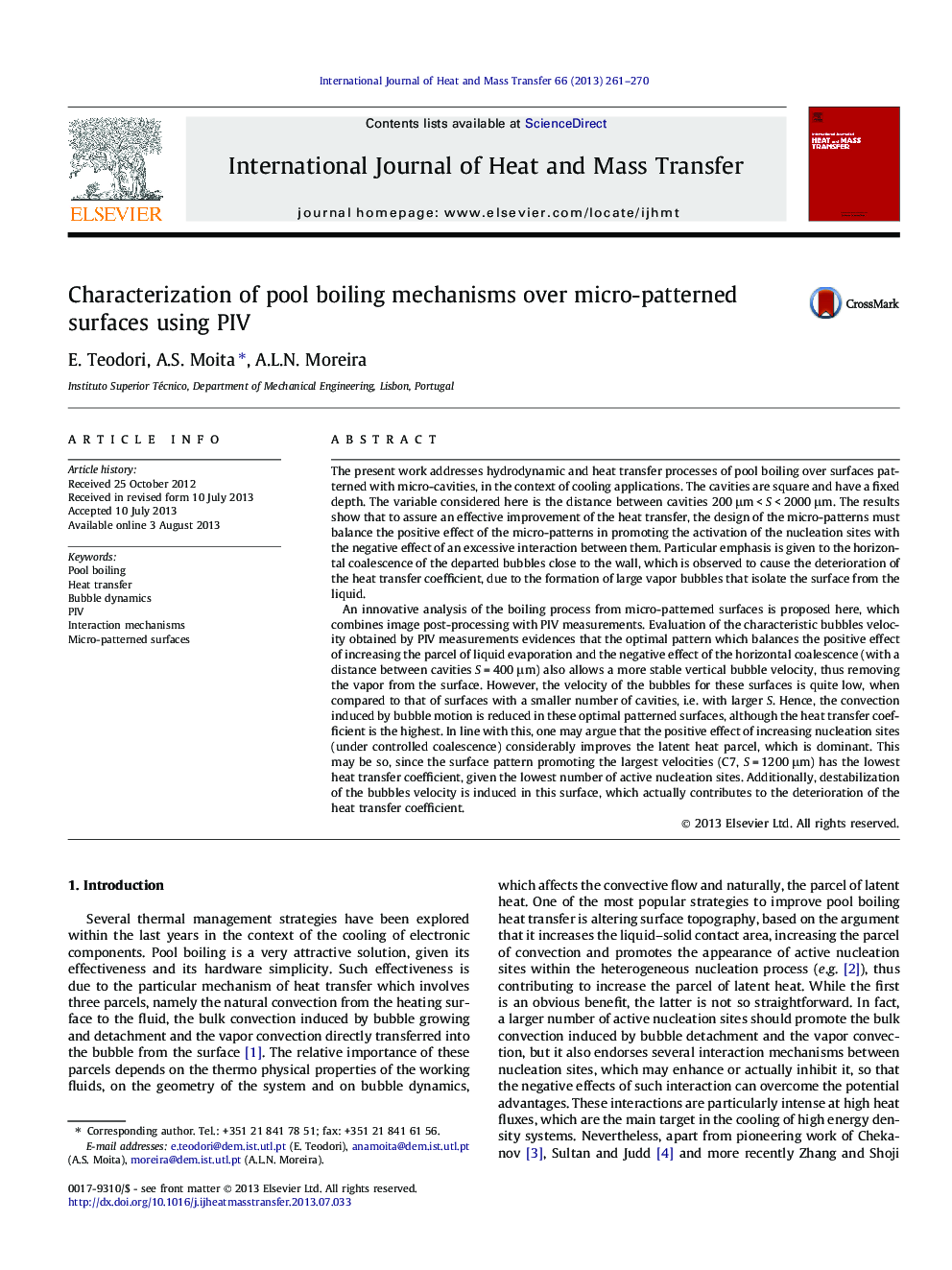| Article ID | Journal | Published Year | Pages | File Type |
|---|---|---|---|---|
| 7057981 | International Journal of Heat and Mass Transfer | 2013 | 10 Pages |
Abstract
An innovative analysis of the boiling process from micro-patterned surfaces is proposed here, which combines image post-processing with PIV measurements. Evaluation of the characteristic bubbles velocity obtained by PIV measurements evidences that the optimal pattern which balances the positive effect of increasing the parcel of liquid evaporation and the negative effect of the horizontal coalescence (with a distance between cavities S = 400 μm) also allows a more stable vertical bubble velocity, thus removing the vapor from the surface. However, the velocity of the bubbles for these surfaces is quite low, when compared to that of surfaces with a smaller number of cavities, i.e. with larger S. Hence, the convection induced by bubble motion is reduced in these optimal patterned surfaces, although the heat transfer coefficient is the highest. In line with this, one may argue that the positive effect of increasing nucleation sites (under controlled coalescence) considerably improves the latent heat parcel, which is dominant. This may be so, since the surface pattern promoting the largest velocities (C7, S = 1200 μm) has the lowest heat transfer coefficient, given the lowest number of active nucleation sites. Additionally, destabilization of the bubbles velocity is induced in this surface, which actually contributes to the deterioration of the heat transfer coefficient.
Related Topics
Physical Sciences and Engineering
Chemical Engineering
Fluid Flow and Transfer Processes
Authors
E. Teodori, A.S. Moita, A.L.N. Moreira,
